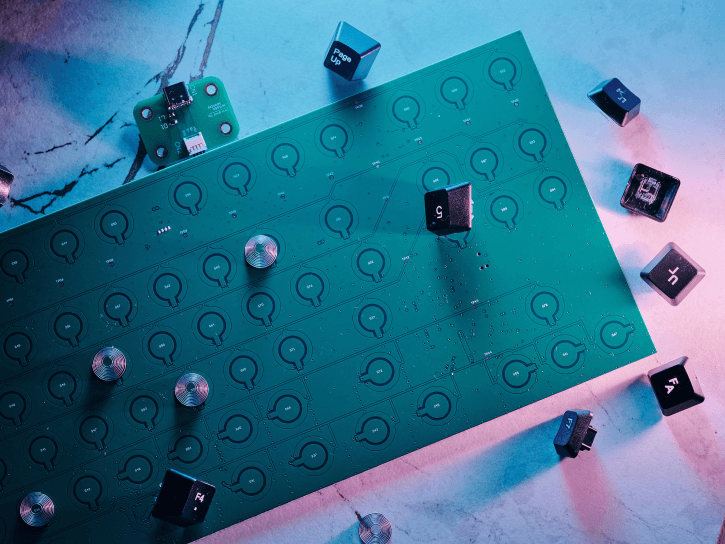Pre-project Preparation: What It Is and Why It Matters


Andrey Solovev
Chief Technology Officer, PhD in Physics and Mathematics

Timur Yuldashev
IT Writer, PhD in Philological Sciences
Pre-project preparation is a crucial stage in the development of any complex process, such as electronic devices or software, requiring thorough preparation and planning. Structured project planning lays the foundation for project success by ensuring alignment among all relevant stakeholders and within the planning process. Clearly defining objectives at the outset is essential to guide the project towards successful outcomes. In this article, we share our perspective on how to build the foundation of a successful project.
Pre-Project Preparation Stages
Pre-project preparation is a flexible process depending on the specifics, size, and complexity of the project. Some stages may be skipped, merged, or run in parallel.
Usually, pre-project preparation consists of the following steps:
- Product concept analysis
Before beginning the development of an electronic device or software, the potential client typically conducts market research, analyzes competing solutions, and identifies strengths and weaknesses. Activities required at this step also include defining the target audience, user needs, and expectations. Usually, clients approach us with a clear vision of the product and a concept that outlines the unique features and advantages of the planned solution.
Skipping this stage is not advisable. Otherwise you may end up wasting time and money trying to develop something that is unfeasible, lacks demand, or has long been available in multiple variations on the market.
During our initial contact with the client, we clarify technical details, desired timelines, and budget. From the client’s responses, it quickly becomes apparent whether they have conducted any preliminary market research and if they have a clear understanding of how the device or software is intended to function, what the project budget will be, or what trade-offs might be required. Understanding the nature of the project and the organization is crucial for effective project planning and implementation.
We do our best to assess the idea's value and the product’s competitiveness. For example, consider a raw idea with uncertain prospects: a client requested a tiny device that attaches to a lipstick or mascara cap. The device would function as a timer and notify the user when the cosmetics have expired. The client liked the idea but had not conducted any market research. Our team was skeptical about both the project concept and its feasibility. Consequently, the project did not move forward.
Another example is when the timeline or budget is unrealistic. Developing a large-scale project, such as a battery management system with a capacity of several megawatts, cannot be completed in just a few months with a budget of a few thousand dollars. If a client insists on unrealistic deadlines and budgets, productive dialogue is unlikely to happen.
- Nondisclosure agreement (NDA)
A typical contract for electronics or software development includes confidentiality clauses, but upon request, an NDA can be signed even before the main agreement. The company undertakes not to use or share project details (ideas, technical solutions, commercial info, etc.) obtained during negotiations.
- Schedule and budget planning
It is essential to identify and allocate financial resources and other resources early in the process to ensure the project plan is realistic and achievable. Accurate estimation is equally important for both the client and the development team. The client needs to plan their budget and timeline, as funding sources are always limited, so they want to know the actual cost of the development and how long the work will take. Naturally, they also expect reassurance that the finished product will be delivered on schedule.
When evaluating a project, developers allocate tasks and workload for each team member. Any mistake in these early estimates may result in staff shortages, rushed work, and eventual errors.
We usually provide a rough initial estimate to the client during the very first calls. This typically includes a range for both the number of man-hours and the potential cost, as well as an expected timeframe—though not tied to specific dates. For smaller or standard projects, this range is narrow, such as 500–550 man-hours. Larger projects or new, unfamiliar tasks come with a broader estimate, as additional time is built in for risks and uncertainties that always accompany extensive undertakings.
The first estimate is based on our experience with similar projects. Once the client agrees with this range, the project team prepares a detailed, precise calculation.

In rare cases, it is possible to estimate a software project without a formal technical specification. This can be done if there is already a detailed program description or an existing similar application to reference.
- Gathering requirements and developing Technical Specification
At this stage, it is important to identify and determine project goals, requirements, and potential risks to ensure the project is set up for success. There are several ways to organize this process. The client may choose to prepare the technical specification independently, detailing the product’s functional and non-functional requirements, any preferred components, certification needs, and other specifics. On our side, we are always ready to help refine and expand this document, offering optimal technical solutions based on the project’s requirements.
Alternatively, the client might just have a general product concept or a physical prototype. In that case, we create the technical specification from scratch, define the set of technologies and tools to be used, identify the key project milestones, finalize all details together, and send it to the client’s email. When the document is approved, we move on to development.
This approach, however, isn’t suitable for every project. For instance, when developing a medical device, engineers rely on the client to provide a detailed specification outlining all features and performance parameters.
A comprehensive technical specification significantly speeds up project initiation. Still, we understand that not every client can outline all the details from the beginning, so we are willing to start even with broad conceptual ideas.
For example, one of our clients had been manufacturing and selling hot tubs for many years but had no expertise in electronic system design. They approached us with the idea of automating tub control but had no clear vision of how it should be implemented.

We suggested developing a controller and a mobile app to let users manage their hydromassage baths and adjust settings directly from their phones. The project took longer than if the client had come to us with a detailed technical specification, but this approach turned out to be the most effective—it simply wasn’t possible for them to prepare such documentation on their own.
For us, the project was an exciting challenge too. It allowed our team to dive deep into the details and carry out a comprehensive study. Later, when another client requested our technical assistance with a similar solution, we already had the experience to recommend the best components—an optimal microcontroller and other parts with a great balance of performance and cost. We also helped refine the design by suggesting the removal of unnecessary, expensive features that didn’t add real value.
So, what does a solid technical specification usually include?
- Functional requirements, areas of application, and how the device differs from existing solutions
- Non-functional parameters such as the power source, data transfer methods, and peripherals
- Operating conditions like temperature, humidity, and pressure
- Typical usage scenarios
- Overall architecture
- Certification standards
A full technical specification, which later becomes the foundation of the project documentation, may also contain detailed estimates for each stage in man-hours, a production schedule, risk assessments, and a clear list of deliverables.
Creating a technical specification is always a shared journey. You bring your ideas, and we help organize them, add the necessary technical depth, and turn vision into a real, structured plan.
- Preparing the commercial proposal
When a project is large or complex, we prepare a commercial proposal tailored to the client's needs. Sometimes, it’s just a simple one-page overview that highlights the key points about the development process. Other times, it’s a detailed document filled with excerpts from the technical specification, cost estimates, project timelines, information about our company, the team members who will be working with you, and examples of similar projects we’ve successfully completed. Also, responsibilities must be clearly assigned and the responsible parties determined for each stage of the project to ensure accountability and success.
- Building the team
While we’re working on the technical specification, we’re also putting together the perfect team to ensure the project progresses at an acceptable pace. This team might include one or several developers, a tester, an analyst, a project manager, and maybe some other experts—everyone with deep knowledge in their specialty. The total number of developers depends on how complex the project is. Large-scale work also requires more people. Thanks to our specialists’ experience and skills, we can promise you a high-quality outcome and smooth, efficient project delivery.
- Research
Often, clients come to us wanting a reality check—a second opinion on whether their idea will actually work. Sometimes, an idea can be very exciting but hard to judge its feasibility without digging deeper. In these situations, we step in with a pre-project study to explore the idea, assess its chances, and find the best way forward—before any actual development begins.
We also do research when a project involves updating an existing device or replicating a sample. For instance, once a client brought us a prototype of a capacitive keyboard. Our job was to build a solution that matches its performance. We started by thoroughly studying the sample, brainstorming various design options, and selecting the components that would deliver the best balance of quality and cost.

After completing our research, we prepare a detailed report that outlines one or more possible paths for the project. The client then decides which direction to take.
Some projects—especially complex or large-scale ones—require much more time for in-depth analysis. For example, it took us several weeks to fully explore the development of a battery management system (BMS) that became part of a large battery energy storage system (BESS). Although the client provided detailed project documentation, the scope of the work was massive. It took a month just to prepare, and the actual development lasted several years. The end result was a system comparable in power to an average hydroelectric plant.
Why Pre-Project Preparation Matters
Pre-project preparation is what sets a successful project apart from one that runs into problems later. Here’s why it’s so important:
- It gives everyone a clear understanding of the goals and vision. With well-defined requirements, the team can focus on what truly matters and provide corresponding technical support instead of chasing unclear details.
- A thorough technical specification helps us choose the right technologies—hardware components, frameworks, libraries, and programming tools—that will make the product both stable and powerful.
- The resulting specification becomes the foundation for quality control at every development stage.
- Clear requirements enable accurate scheduling and budgeting, minimizing the risk of exceeding estimates.
- The more thoroughly a project is planned from the start, the lower the risk of encountering serious issues or costly revisions later.
- Clear tasks and a transparent roadmap keep the team motivated and productive.
Effective project preparation involves thorough planning, risk assessment, and resource organization to ensure project success. It is, in essence, an investment in success. It minimizes risks, optimizes development, and ensures the final product truly meets the client’s expectations. Documents such as project plans, risk assessments, and deliverables are essential for electronics design projects, ensuring that all requirements and processes are clearly defined and tracked throughout the project lifecycle.
We devote great attention to this stage because careful preparation leads to better results. Whether you’re looking for custom electronics or software development, a technical consultation, or an expert review of an existing project, we’re always ready to help you bring your idea to life with confidence.
Share this article


Related
materials

Battery Management System (BMS): Effective Ways to Measure State-of-Charge and State-of-Health
We’ve picked out tried-and-true methods of estimating the battery’s state-of-charge and state-of-health to share them with you.
LEARN MORE 
LEARN MORE 

Qt and C++ Embedded Development: Pros, Cons, and Alternatives
Learn more about the benefits of using Qt and C++ for embedded systems. We provide a detailed review of popular...
LEARN MORE 
LEARN MORE 

Starting a Healthcare Electronics Development Project: Key Points You Need to Know
Where to start and what to consider when developing electronics and software for healthcare? Our thorough guide answers all the...
LEARN MORE 
LEARN MORE 



